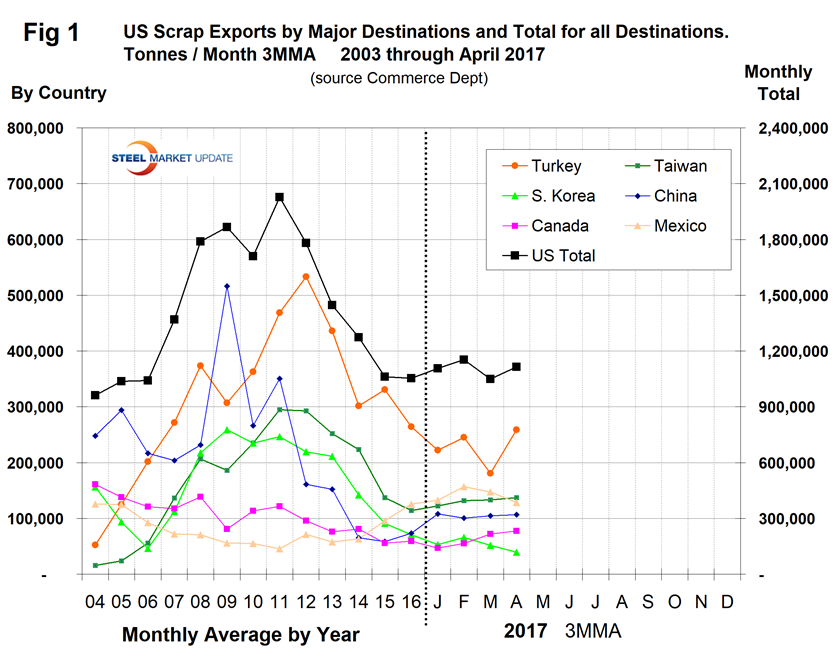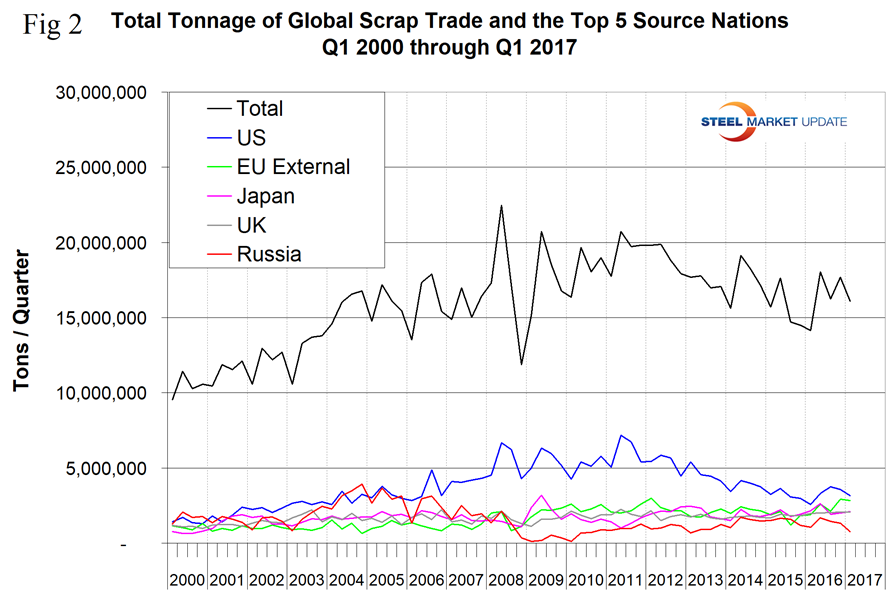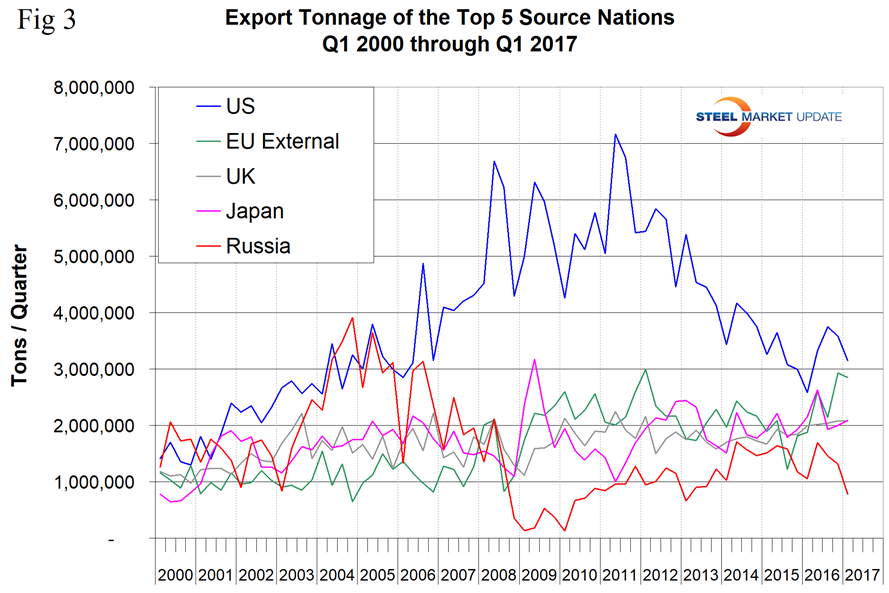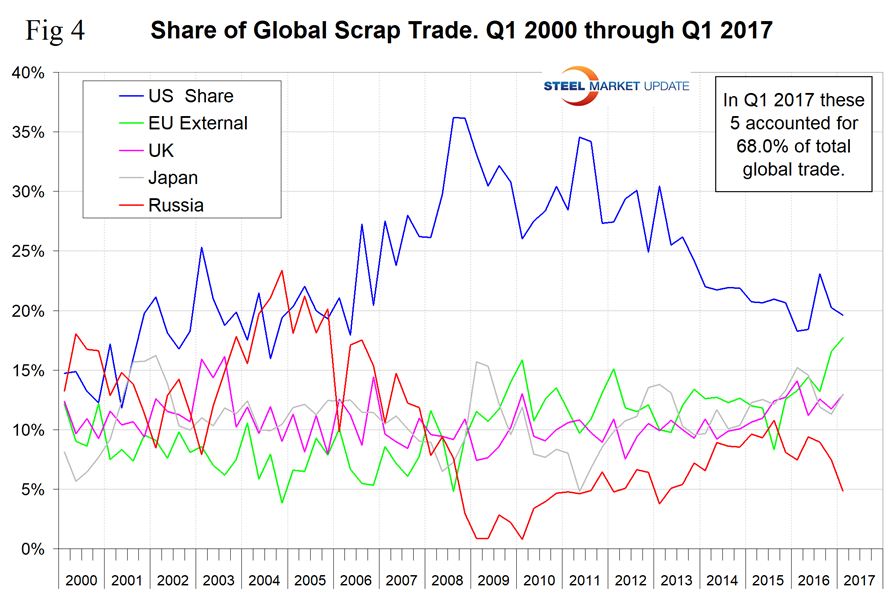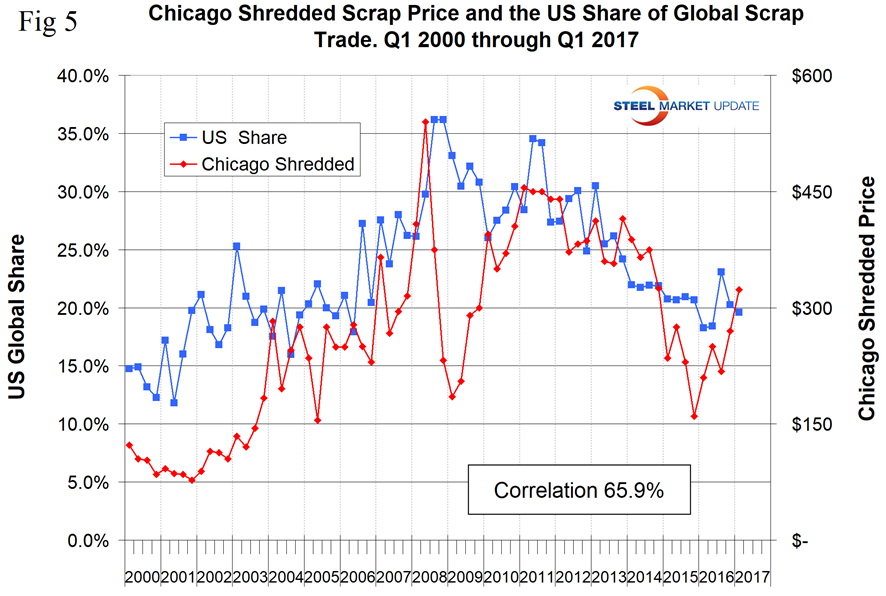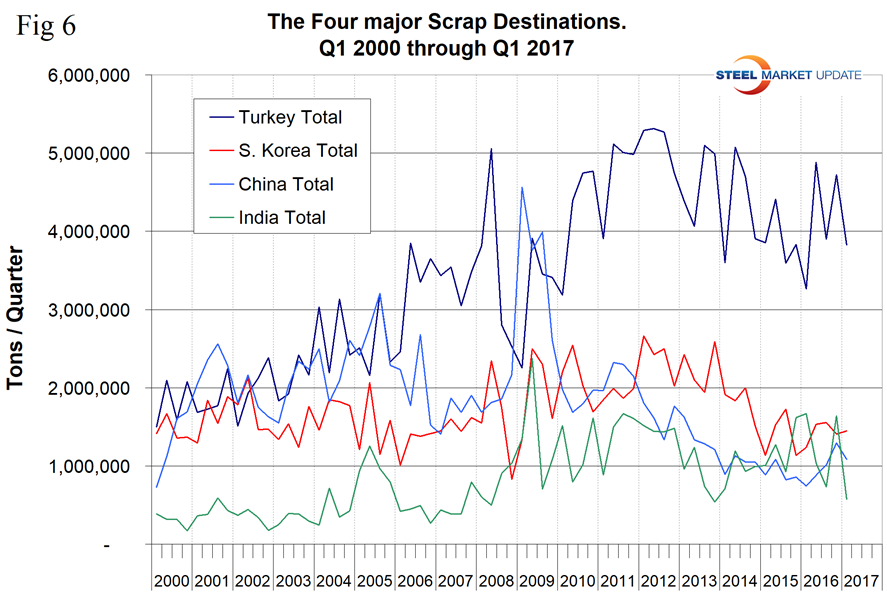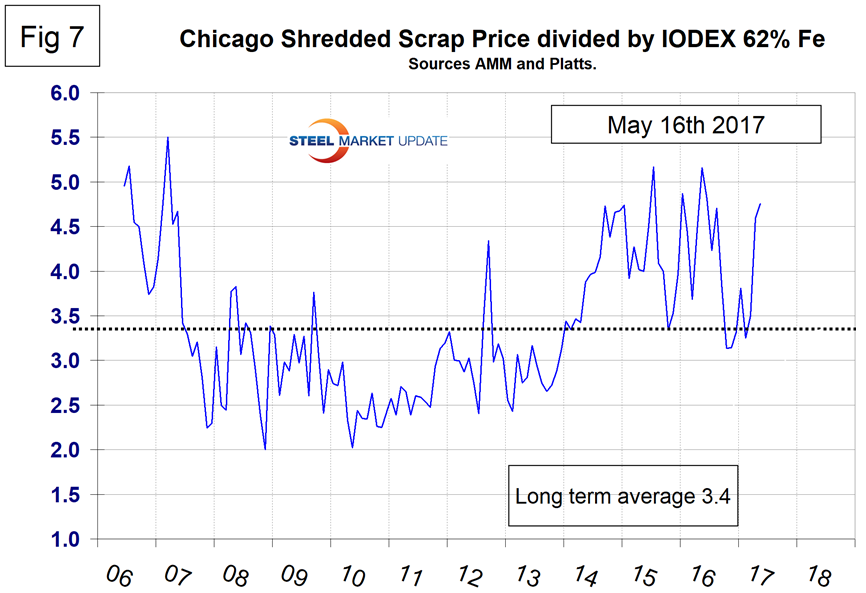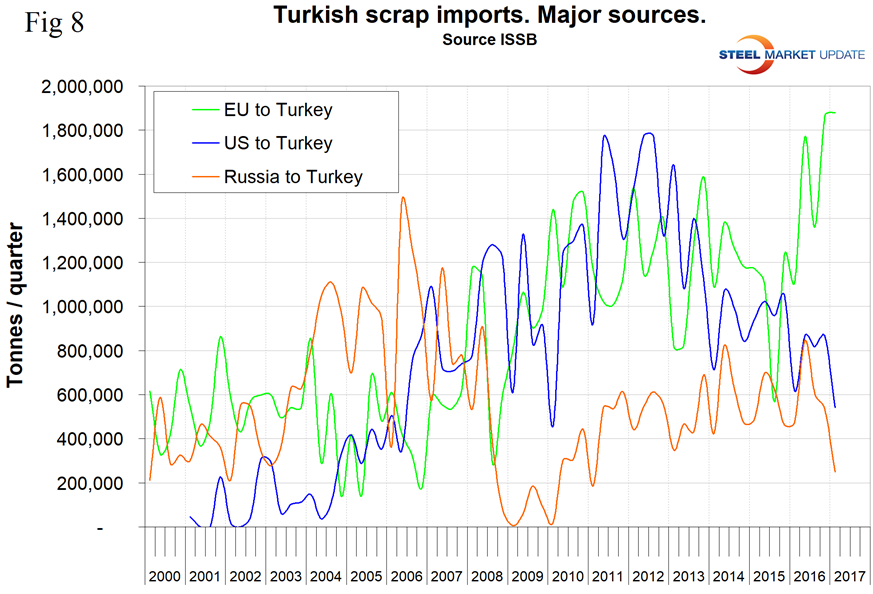Market Data

June 21, 2017
The Gyrations of Global Scrap Trade
Written by Peter Wright
This is only the third time we have produced a report on global scrap trade. In the future, we will report quarterly because to understand the gyrations of the domestic scrap market we should be aware of where the U.S. stands as a global player. This data is not very current as some nations are slow to report, but we still believe it gives a valuable perspective of global trends and is the foundation of where we are today. To set the scene, Figure 1 shows total scrap exports from the U.S. as reported by the U.S. Department of Commerce on the right axis together with the major destinations reported on the left axis. It shows the monthly average for the years 2004 through 2016 and the three-month moving average for January through April 2017.
Year to date through April, U.S. scrap exports were up by 22.6 percent from the same period in 2016. The increase compared to 2015 is similar, but exports are well down from the rate experienced in the years 2007 through 2014.
In our analysis of global scrap trade, we have excluded scrap that moved within the EU from the global total. Figure 2 shows the total tonnage of global trade since Q1 2000 and the volume of the top five suppliers. These five are the U.S., Japan, the EU, the UK and Russia, and they accounted for 68.0 percent of the total in Q1 2017.
The total tonnage of ferrous scrap traded between nations in Q1 2016 was the lowest since the recession, but bounced back in the latest four quarters. However, there has been a declining trend since 2011. Figure 3 is the same graph with the total removed to better illustrate the volume of the five major players.
The U.S. is still the biggest player on a tonnage basis, but the EU has been closing the gap since Q3 2015. Figure 4 shows the market share of the top five sources.
The U.S. share peaked at 36.2 percent in the third and fourth quarters of 2008 and has declined to 19.6 percent in Q1 2017. We attribute the long-term U.S. situation to both a decline in actual global commerce and the strengthening of the U.S. dollar. The EU’s share increased to 17.7 percent in the latest data, while Russia experienced a decline from 10.8 percent in Q3 2015 to 4.8 percent in Q1 2017. There is somewhat of a relationship between the U.S. global share and the U.S. domestic scrap price. The result is shown in Figure 5 with a correlation of 65.9 percent.
The fact that our export share increases as our domestic price increases might seem backwards at first glance. However, scrap is a global commodity and this would seem to measure the effect of exports on the domestic price.
Figure 6 shows the tonnage received by the four major importing nations.
Turkey is by far the largest global scrap buyer with a tonnage more than the other three combined. Since Q1 2015, Turkey’s share has ranged from 27 percent to 22.8 percent and was 23.8 percent in Q1 2017. China’s scrap imports have increased in the last four quarters, but our source data from the Iron and Steel Statistics Bureau in the UK indicated that their exports are still almost non-existent. We expect that to change as the massive consumption of steel within China begins to be recycled. China’s steel production is 93 percent BOF, and they have recently shut down a lot of induction furnace capacity due to pollution problems. Therefore, there will be a time when huge tonnages of scrap hit the global market with an extremely disruptive effect. In the long run, China will reduce its dependence on iron ore in preference for scrap, but considering the nation’s already huge surplus in capacity, new investments in EAFs can be expected to be slow. Turkey’s import tonnage declined in 2014 and 2015, recovered in 2016 and declined again in Q1 2017. Part of the reason for these gyrations was the purchase of semi-finished billets and slabs, from China in particular. When the price of scrap is high relative to the price of iron ore as it is today, Chinese semi-finished has a lower cost landed Turkey than the Turkish EAF mills can produce for themselves. The price ratio of scrap to ore has a long-term average of 3.4, but in May 2017 was 4.75 as shown in Figure 7.
In the period 2010 through 2013, Turkey purchased a similar tonnage from the U.S. as it did from the EU. But as the euro has declined in U.S. dollar terms, their scrap has become more attractive, and in Q1 2017 European shipments to Turkey surged to over triple the U.S. tonnage (Figure 8).
SMU Comment: We see four out of five trends in this analysis putting downward pressure on U.S. domestic scrap prices in 2017, and we see a huge disruption of the global scrap market on the horizon.
1) Global scrap trade has increased from a recent low point in Q1 2016.
2) U.S. global share has been declining for five years.
3) China is not yet a player as a global scrap exporter, but we have to believe that a dramatic change is near at hand as the massive consumption of steel in China is increasingly recycled to obsolete scrap.
4) For much of the last four years, including today, the price ratio of iron ore to scrap made semi-finished out of China attractive compared to scrap.
5) The U.S. dollar will continue to strengthen as the Fed raises its target rate in 2017. This will dampen U.S. scrap exports to some extent.



